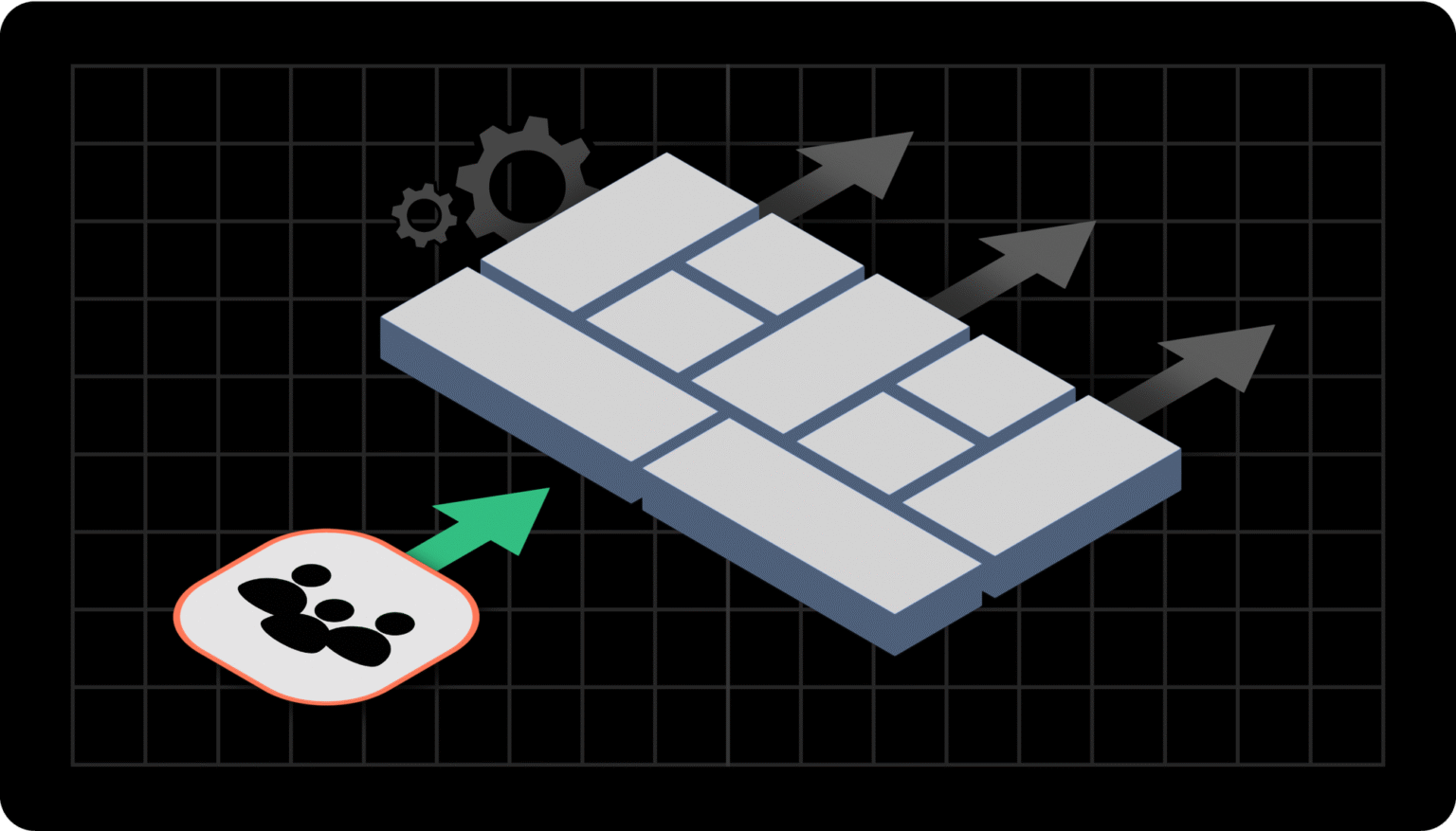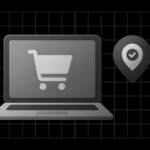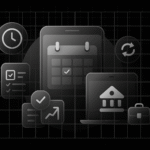If you’re planning a startup or refining your business strategy, you’ve probably come across Lean Canvas vs Business Model Canvas comparisons online.
Both are powerful tools that help you visualize and test your business ideas on a single page, but they serve different purposes and stages of growth.
Both help visualize your business model and improve decision-making. However, while the Business Model Canvas offers a broad, strategic overview, the Lean Canvas focuses on startups and validation, making it faster, leaner, and easier to adjust as your business evolves.
Let’s break down the key differences between these two essential frameworks and discover which one best fits your business goals.
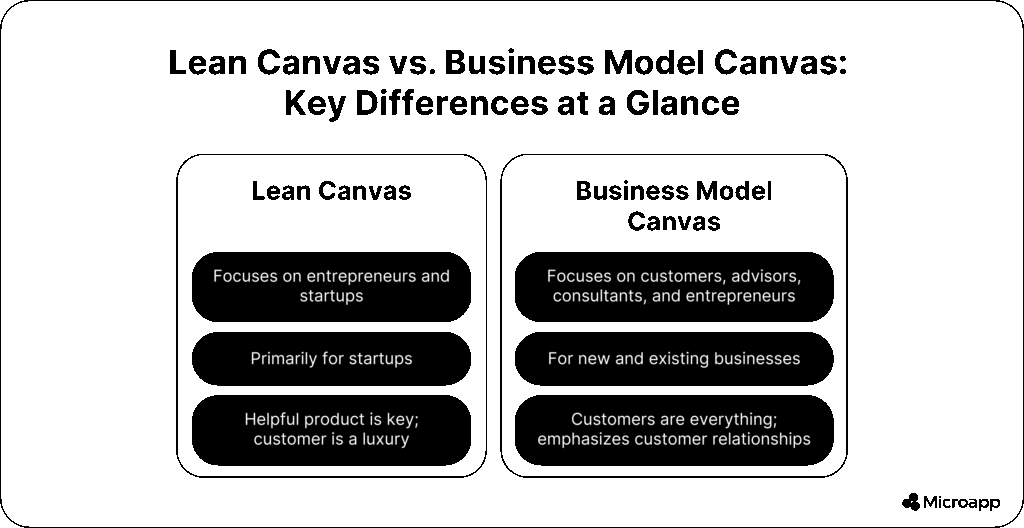
Lean Canvas vs Business Model Canvas Comparison
What is the Lean Canvas?
Think of the Lean Canvas as a one-page startup plan for testing ideas fast.
Instead of spending months on a business plan, you identify your biggest risks, validate your ideas, and pivot early if needed.
It’s perfect for founders, solopreneurs, and small teams looking to simplify their startup journey.
👉 Try the free Lean Canvas Generator to create your own in minutes.
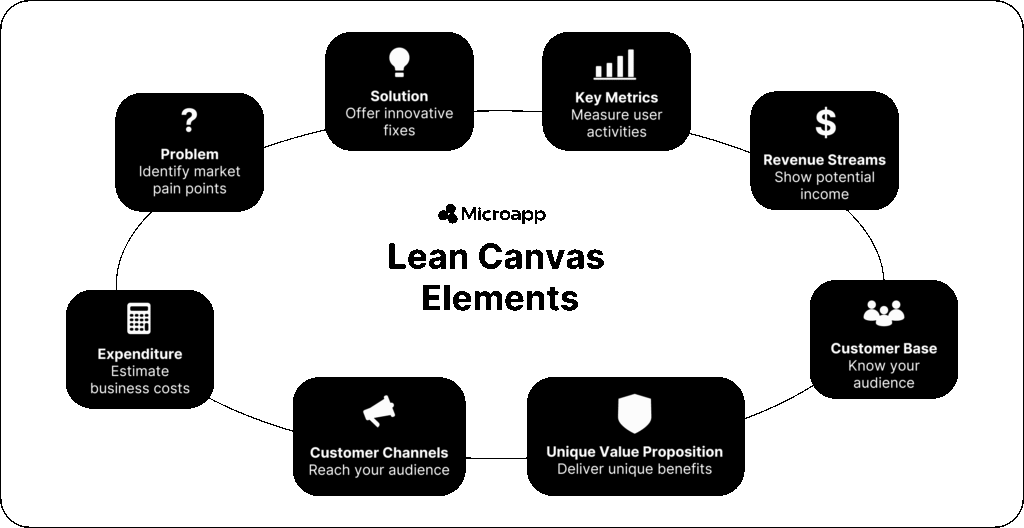
Key Elements of the Lean Canvas:
- Problem: What issue are you solving?
- Solution: How is your product unique?
- Key Metrics: What data proves progress (e.g., leads, users)?
- Revenue Streams: How will you make money?
- Cost Structure: What are your main expenses?
- Customer Segments: Who are you serving?
- Channels: How will you reach them?
- Unfair Advantage: What makes your product stand out?
- Unique Value Proposition: Why should people choose you?
💡 Tip: Keep your Lean Canvas flexible — update it regularly as your startup evolves.
👉 Learn more in our guide: What is a Lean Canvas?
What is The Business Model Canvas?
The Business Model Canvas takes a broader, long-term approach. It’s great for established businesses that need to analyze operations, value delivery, and revenue generation.
It helps you understand not only how your business creates value, but also how it sustains it.
👉 Check out this detailed PDF from the University of Houston: Business Model Canvas Explained
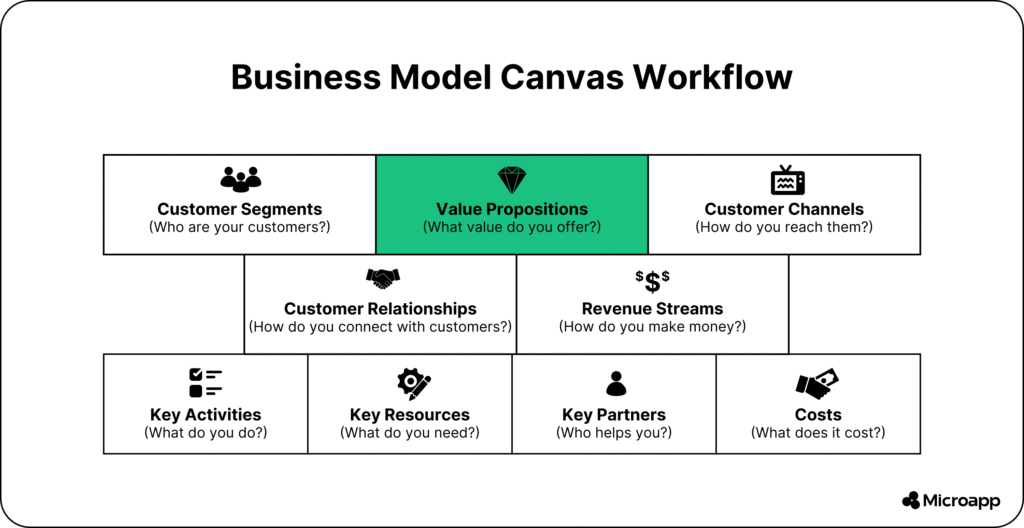
Core Elements of the Business Model Canvas:
- Customer Segments: Your target audience.
- Value Proposition: What sets your offering apart.
- Channels: Communication and distribution methods.
- Customer Relationships: Type of relationship you maintain.
- Revenue Streams: Sources of income.
- Key Activities: Main actions for delivering value.
- Key Resources: Assets and tools needed.
- Key Partners: Collaborators who help you operate.
- Cost Structure: Overview of expenses.
💡 Tip: Use this model if you already have traction and want to refine your business operations or scalability strategy.
👉 Explore related insights: How to Simplify Your Business Model
Lean Canvas vs Business Model Canvas: Key Differences
| Aspect | Lean Canvas | Business Model Canvas |
|---|---|---|
| Focus | Startups and validation | Established businesses and operations |
| Goal | Identify risks, test ideas quickly | Optimize and scale existing models |
| Approach | Problem-solving and flexibility | Structure and sustainability |
| Customer Emphasis | Limited at early stage | Central to business success |
| Use Case | Entrepreneurs and new ventures | Existing companies and consultants |
💡 Tip: Start with a Lean Canvas when validating ideas, then transition to a Business Model Canvas once your business model stabilizes. This evolution ensures your strategy matures with your growth.
Take Action and See Results
Now that you understand the key differences between the Lean Canvas and Business Model Canvas, it’s time to put your knowledge into action.
Start by using the free Lean Canvas Generator to map out your startup idea. It only takes a few minutes.
Once your idea gains traction, transition to the Business Model Canvas to refine your strategy, operations, and growth plan.
By applying the right canvas at the right time, you’ll:
✅ Gain instant clarity on your business direction
✅ Validate ideas faster with fewer risks
✅ Align your team around one shared vision
✅ Build a stronger foundation for long-term growth
Don’t just plan your business, visualize, validate, and scale it with the right canvas today.
